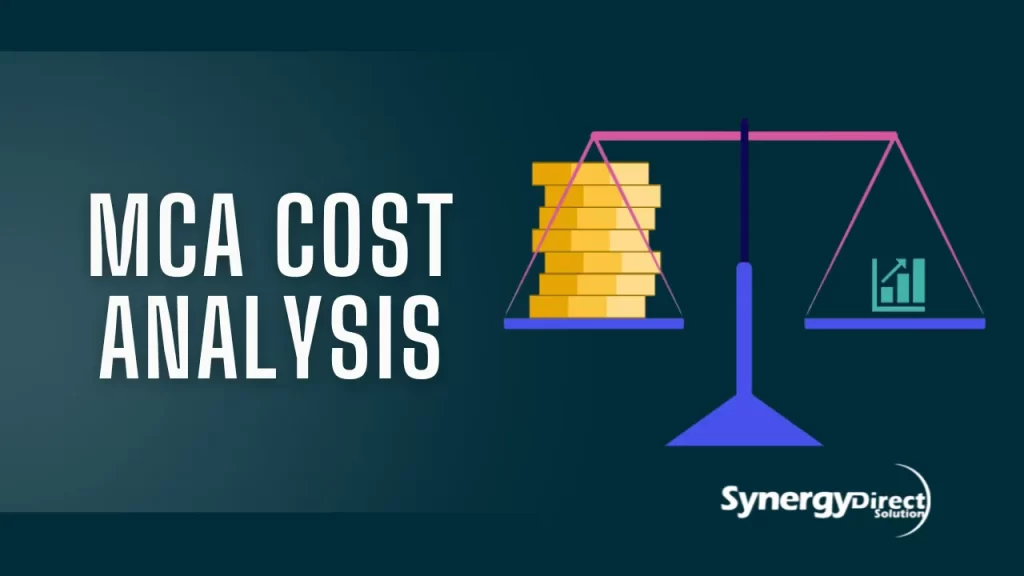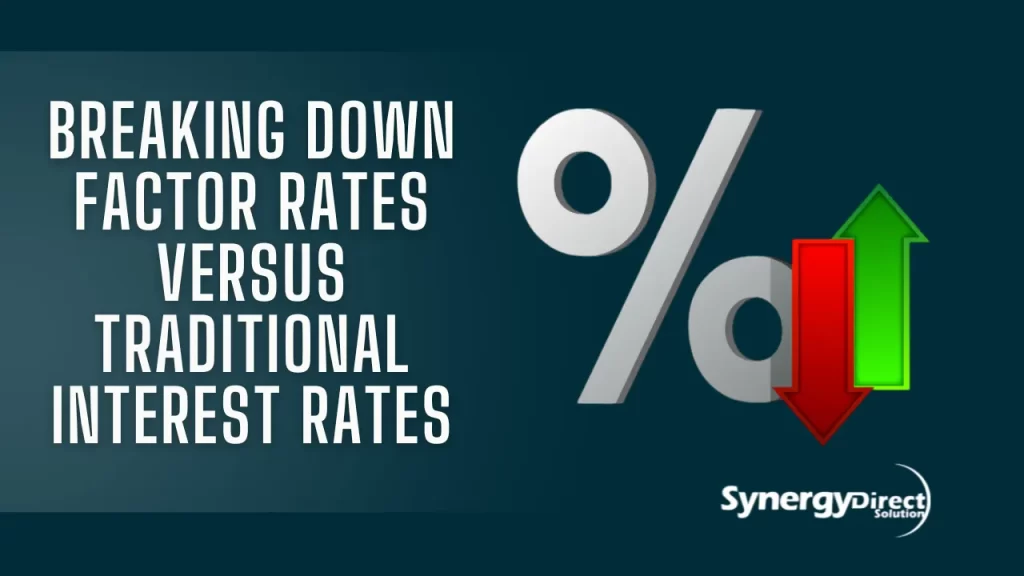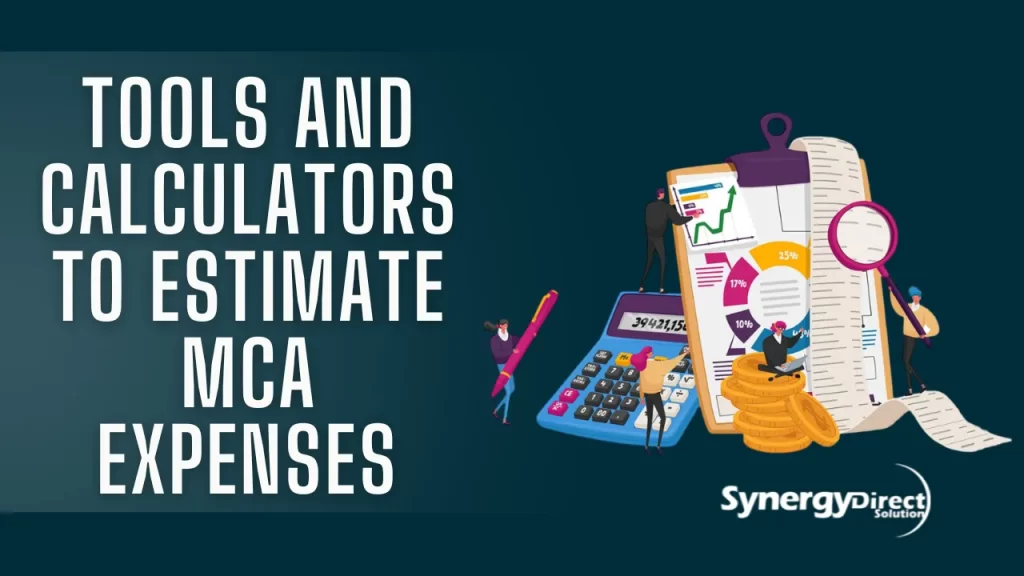MCA Cost Analysis
A Merchant Cash Advance (MCA) cost analysis involves evaluating the total repayment amount, factor rate, and holdback percentage. Unlike traditional loans, MCAs charge a fixed fee instead of interest, often leading to higher overall costs. For example, a $10,000 advance with a 1.4 factor rate requires $14,000 repayment. Holdback percentages from daily credit card sales impact cash flow, making it essential to assess affordability. A proper MCA cost analysis helps businesses avoid excessive fees and determine if the advance supports short-term needs without long-term financial strain.

Cost Benefit Analysis
Cost Benefit Analysis (CBA) is a systematic approach used to evaluate the economic advantages and disadvantages of a project, decision, or investment. It involves comparing the total expected costs against the anticipated benefits to determine whether the action is financially worthwhile.
The primary goal of a cost benefit analysis is to support informed decision-making by identifying whether the benefits outweigh the costs, and by how much. This method is commonly used in business, government planning, and financial management to assess alternatives and allocate resources efficiently.
A thorough CBA includes both tangible factors (like direct expenses and revenues) and intangible elements (such as time, employee satisfaction, or environmental impact). By assigning monetary values to all outcomes, organizations can better justify their decisions, reduce risks, and achieve more cost-effective results. Ultimately, cost benefit analysis ensures that resources are used in ways that generate the highest possible value.
Multi-Criteria Analysis
Multi-Criteria Analysis (MCA), also known as Multi-Criteria Decision Analysis (MCDA), is a decision-making tool used to evaluate complex options that involve multiple, often conflicting criteria. Unlike cost benefit analysis, which focuses mainly on monetary values, MCA allows for both qualitative and quantitative factors to be considered, making it particularly useful in scenarios where not all impacts can be easily monetized.
This method is commonly applied in areas such as urban planning, environmental management, and policy development where social, economic, and environmental factors all play a role.
MCA involves defining a set of criteria relevant to the decision, assigning weights to these criteria based on their importance, and then scoring each alternative against them. The weighted scores are aggregated to determine which option offers the most balanced outcome across all priorities.
This structured and transparent approach enables stakeholders to understand trade-offs, justify choices, and incorporate a broader range of values into the decision-making process. Overall, Multi-Criteria Analysis is a flexible and comprehensive method that enhances decision quality when facing complex, multi-dimensional problems.
Assessing the total repayment amount and effective APR
Assessing the total repayment amount and effective APR (Annual Percentage Rate) is essential when evaluating the cost of a Merchant Cash Advance (MCA). Unlike traditional loans that use an interest rate, an MCA relies on a factor rate to determine the total repayment amount.
However, it’s important to understand how to convert the MCA’s factor rate into an effective APR, which allows for a clearer comparison with other forms of financing. The total repayment amount is calculated by multiplying the amount borrowed by the factor rate. For example, a $10,000 advance with a factor rate of 1.3 would require a total repayment of $13,000.
To assess the effective APR, factors like the repayment term, frequency of payments, and any additional fees need to be considered. This conversion can be complex, as the repayment period is often shorter than traditional loans, and the daily or weekly payments may be significantly higher. By calculating the APR, you can better understand the true cost of the MCA over time and make a more informed decision based on your financial capacity and needs.
Cost Benefit and Multi-Criteria Analysis Guidance
Cost Benefit Analysis (CBA) and Multi-Criteria Analysis (MCA) are both vital tools used in decision-making, especially for projects involving significant investments or long-term impacts. Each method has its strengths, and guidance on when and how to apply them helps ensure decisions are transparent, evidence-based, and aligned with strategic goals.
When to Use CBA
CBA is most effective when the majority of costs and benefits can be expressed in monetary terms. This makes it ideal for infrastructure projects, investment planning, and financial budgeting, where quantitative data are readily available. The key steps in conducting a CBA include identifying all relevant costs and benefits, converting them to a common monetary unit, applying discount rates to account for the time value of money, and calculating net present value (NPV), benefit-cost ratio (BCR), or internal rate of return (IRR). For reliable results, it’s important to use realistic assumptions, conduct sensitivity analysis, and include indirect or long-term impacts wherever feasible.
When to Use MCA
MCA is preferred when decisions must account for a range of qualitative and quantitative criteria that cannot all be monetized. This method is particularly useful in public policy, sustainability assessments, and stakeholder-driven projects where social, environmental, and ethical factors play a role. The process involves establishing relevant criteria, assigning weights based on stakeholder priorities, and scoring alternatives. Tools like decision matrices, pairwise comparisons, and software applications can be used to support this process.
Combining CBA and MCA
In practice, CBA and MCA can be combined to provide a more comprehensive analysis. For instance, CBA can be used to quantify financial impacts, while MCA integrates additional non-monetary concerns such as environmental preservation, community acceptance, or long-term resilience. This hybrid approach is increasingly used in government planning and environmental assessments, ensuring decisions are both economically sound and socially responsible.
Best Practices in Applying CBA and MCA
- Stakeholder Engagement – Involve stakeholders early to identify important criteria and values.
- Transparency – Clearly document assumptions, data sources, and weighting methods.
- Sensitivity Testing – Test how changes in key assumptions affect the results.
- Context-Specific Models – Customize the analysis to fit the project’s goals, scale, and complexity.
- Use of Technology – Employ decision support tools and software to streamline data analysis and visualization.
Identifying and calculating additional fees associated with MCAs
When evaluating the true cost of a Merchant Cash Advance (MCA), it’s critical not only to consider the factor rate but also to identify and calculate additional fees that may significantly impact the total repayment amount. These fees can include origination fees, processing charges, administrative costs, and sometimes even early repayment penalties, despite the absence of interest savings.
For instance, a lender might charge a 3% origination fee on a $20,000 advance—equating to $600—reducing the net funds received to $19,400. Some MCA providers may also impose daily ACH withdrawal fees, or fees for insufficient funds if your account lacks the balance for the scheduled repayment.
Calculating these fees upfront provides a clearer picture of the effective cost of the advance. Borrowers should always request a full disclosure of all potential charges and add them to the total repayment calculation to assess the true annualized cost, often significantly higher than initially perceived.
Mca cost analysis template
An MCA Cost Analysis Template serves as a vital financial tool for businesses and individuals evaluating the total expenses associated with a Merchant Cash Advance (MCA). This structured template helps in identifying the true cost of borrowing by breaking down key components such as the advance amount, factor rate, holdback percentage, estimated repayment duration, and total repayment amount.
By using this template, businesses can make informed financial decisions, compare funding options, and assess whether the cash advance aligns with their cash flow capabilities. It also promotes transparency, enabling a clearer understanding of daily or weekly repayments and how these affect overall profitability.
A well-designed MCA cost analysis template ensures all variables are accounted for, minimizing financial risk and aiding in strategic planning for short-term funding needs.
Multi criteria Analysis example
A Multi-Criteria Analysis (MCA) example can help illustrate how decision-making can be structured when multiple conflicting factors must be considered. Imagine a local government evaluating potential locations for a new public library. The key criteria may include cost, accessibility, environmental impact, land availability, and proximity to schools or residential areas. Each site is rated on these criteria using a scoring system—say, from 1 to 5—based on how well it meets each requirement.
Then, weights are assigned to the criteria depending on their importance (e.g., accessibility might be weighted higher than cost). By multiplying the scores by their respective weights and adding them up, decision-makers can rank the options objectively. This approach helps remove bias and ensures that all relevant aspects are taken into account before making a final decision.
Breaking Down Factor Rates Versus Traditional Interest Rates
When comparing factor rates versus traditional interest rates, it’s important to understand how each functions and impacts borrowing costs. A factor rate is commonly used in Merchant Cash Advances (MCAs) and is expressed as a decimal (e.g., 1.3), not a percentage.
This rate is multiplied by the advance amount to determine the total repayment—so an advance of $10,000 with a factor rate of 1.3 means the borrower must repay $13,000. Unlike traditional interest, this cost does not decrease over time and is fixed regardless of how quickly the loan is repaid.
On the other hand, traditional interest rates—used in term loans or credit lines—are typically annual percentage rates (APR) that apply to the remaining balance and can fluctuate with time. These loans often allow for interest savings if repaid early, unlike factor-rate-based financing. Understanding the distinction is essential, as factor rates can appear less expensive upfront but often result in higher effective borrowing costs, especially over short periods.

Comparing the cost of MCAs to other financing options
When comparing the cost of Merchant Cash Advances (MCAs) to other financing options, it’s essential to understand the key differences in how costs are structured. MCAs are often more expensive than traditional loans, as they are typically not based on interest rates but on a factor rate. For instance, a $10,000 MCA with a factor rate of 1.3 means the borrower will need to repay $13,000, regardless of how long it takes to repay.
In contrast, traditional bank loans usually have lower interest rates, which are expressed as an annual percentage rate (APR), often ranging from 5% to 20% depending on the borrower’s creditworthiness. Bank loans also tend to have longer repayment terms, allowing borrowers to make smaller, more manageable monthly payments.
Lines of credit may offer flexible repayment schedules, with interest rates typically between 7% and 25%, depending on the lender. While MCAs are often quicker to access and require less documentation, their short repayment terms and high costs make them a more expensive option, especially for businesses that need long-term funding.
Invoice financing and business credit cards can be other alternatives, with varying costs, but they still tend to offer lower rates compared to MCAs. Therefore, understanding the total repayment amount and considering alternative financing options is crucial for businesses to make a well-informed decision based on their specific cash flow needs and repayment capabilities.
Tools and calculators to estimate MCA expenses
When evaluating the costs of a Merchant Cash Advance (MCA), using tools and calculators can help businesses estimate expenses accurately before committing to a funding option. MCA cost calculators are widely available online, offering an easy way to calculate the total repayment amount by inputting the advance amount, factor rate, and repayment term.
These calculators automatically multiply the advance amount by the factor rate to give users a quick estimate of the total repayment due. Some advanced calculators may also allow users to input additional factors, such as daily holdback percentage, to simulate repayment based on specific business cash flow conditions.
In addition to calculators, businesses can use APR comparison tools, which convert factor rates into an effective annual percentage rate (APR). This is particularly useful for comparing the cost of an MCA against traditional loan products, which are usually quoted with an APR.
By using these tools, businesses can gain a clearer understanding of the financial impact of an MCA, ensuring that they make more informed decisions that align with their long-term cash flow and financial goals.

Conclusion
In conclusion, evaluating the cost of a Merchant Cash Advance (MCA) requires a comprehensive analysis that goes beyond just the factor rate. By considering key factors such as the total repayment amount, holdback percentages, additional fees, and the effective APR, businesses can gain a clear understanding of the true cost of borrowing. Using tools and calculators to estimate these expenses helps businesses make more informed decisions, ensuring that the MCA aligns with their financial capabilities and short-term funding needs. Additionally, comparing the MCA to other financing options, such as traditional loans or lines of credit, allows businesses to choose the most cost-effective solution for their unique circumstances. A thorough MCA cost analysis ultimately helps minimize financial strain and supports sustainable growth by providing transparency and clarity in the decision-making process.
FAQS
- What is the MCA method?
- The MCA method (Multi-Criteria Analysis) is a decision-making tool used to evaluate options based on multiple, often conflicting criteria. It involves scoring alternatives against weighted criteria and helps decision-makers prioritize options based on a range of factors, both qualitative and quantitative.
- The MCA method (Multi-Criteria Analysis) is a decision-making tool used to evaluate options based on multiple, often conflicting criteria. It involves scoring alternatives against weighted criteria and helps decision-makers prioritize options based on a range of factors, both qualitative and quantitative.
- What is the difference between MCA and CBA?
- MCA (Multi-Criteria Analysis) focuses on evaluating options based on a mix of quantitative and qualitative criteria, while CBA (Cost-Benefit Analysis) primarily assesses monetary costs versus benefits. CBA is more focused on financial impacts, while MCA includes social, environmental, and other non-financial factors in the decision-making process.
- MCA (Multi-Criteria Analysis) focuses on evaluating options based on a mix of quantitative and qualitative criteria, while CBA (Cost-Benefit Analysis) primarily assesses monetary costs versus benefits. CBA is more focused on financial impacts, while MCA includes social, environmental, and other non-financial factors in the decision-making process.
- What are the 5 steps of cost-benefit analysis?
- The five steps of Cost-Benefit Analysis (CBA) are:
- Identify costs and benefits – List all relevant costs and benefits associated with the decision or project.
- Quantify costs and benefits – Assign monetary values to the identified costs and benefits.
- Compare costs and benefits – Subtract total costs from total benefits to calculate net benefit.
- Apply discounting – Adjust for the time value of money, typically using a discount rate.
- Make a decision – Based on the analysis, determine whether the benefits outweigh the costs and if the project should proceed.
- Identify costs and benefits – List all relevant costs and benefits associated with the decision or project.
- The five steps of Cost-Benefit Analysis (CBA) are:
- What is marginal cost and analysis?
Marginal cost refers to the additional cost incurred from producing one more unit of a good or service. Marginal cost analysis involves evaluating the change in total cost when the quantity produced is altered, helping businesses determine the optimal level of production. It is critical for pricing and profit-maximizing decisions.
